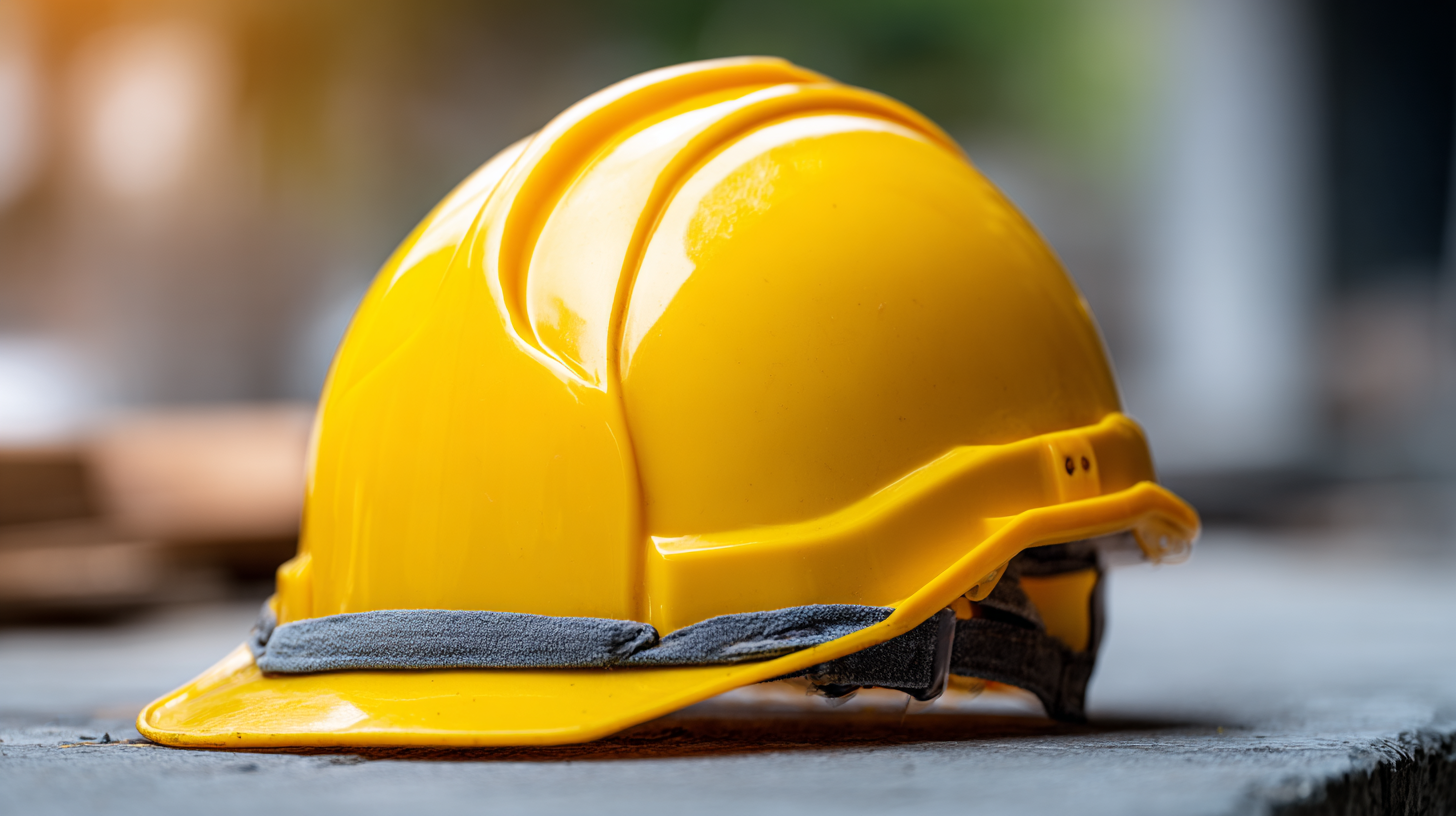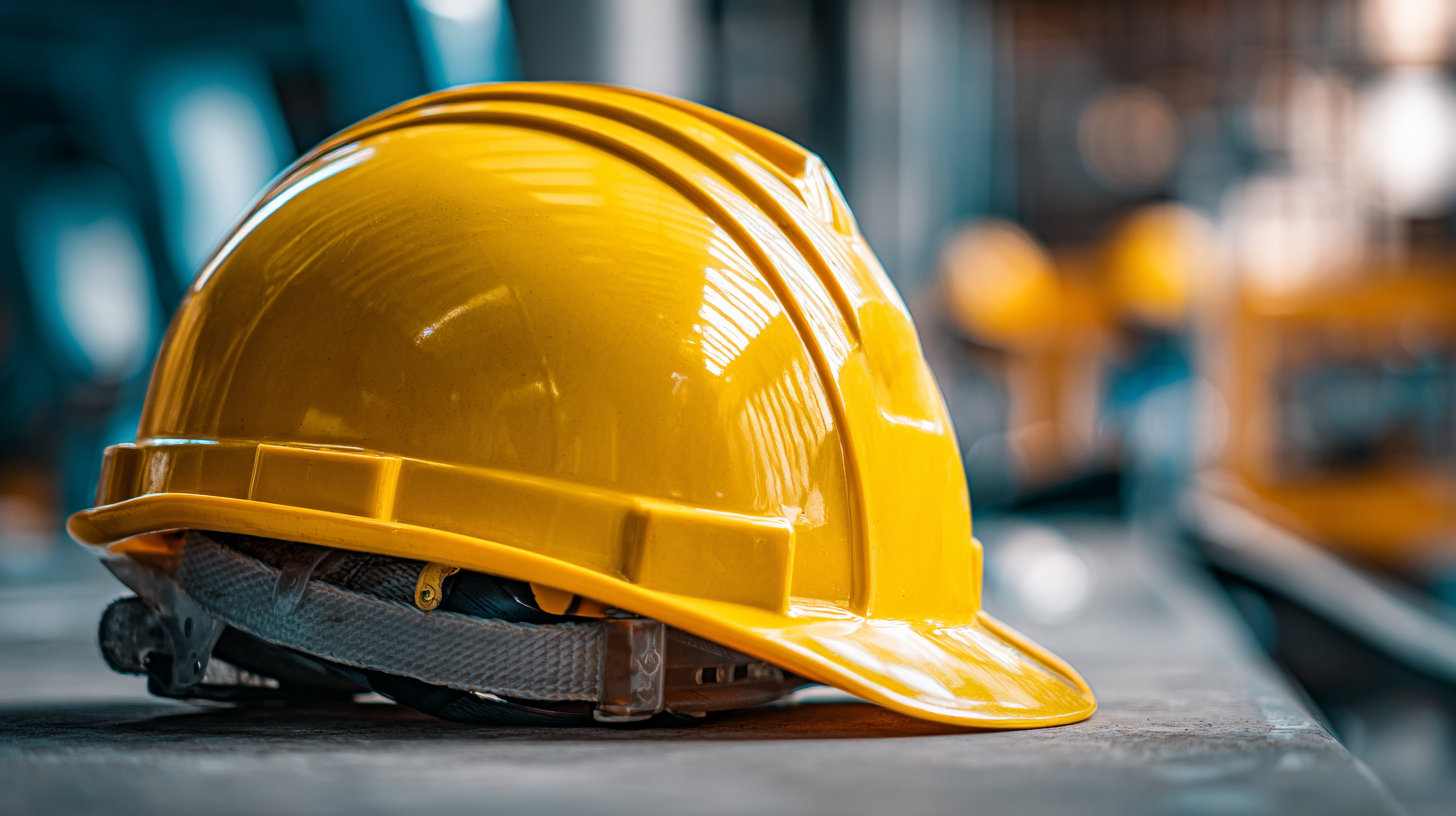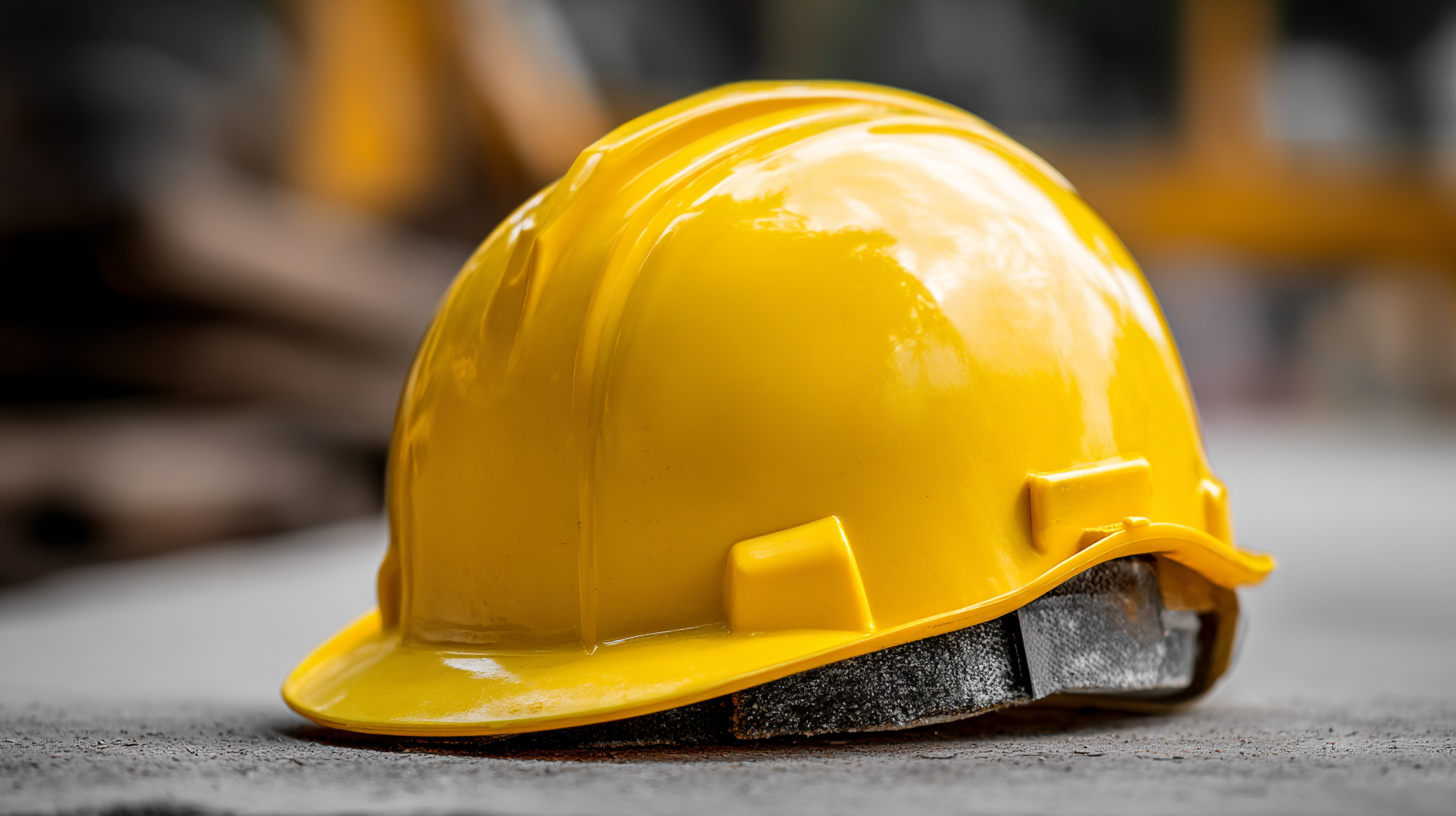Essential Checklist: Selecting the Best Hard Hat for Your Safety Needs
When it comes to workplace safety, selecting the right Hard Hat is paramount to protecting yourself against potential hazards. With various options available in the market, making a decision can be overwhelming. This essential checklist will guide you through the crucial factors to consider, ensuring that you choose the best Hard Hat tailored to your specific safety needs.
 From the level of protection required in your work environment to the fit and comfort of the hat, each aspect plays a significant role in safeguarding your health. Understanding the reasons behind each selection criterion will empower you to make an informed choice.
Whether you work in construction, manufacturing, or any other high-risk industry, equipping yourself with the appropriate Hard Hat is not just a requirement; it's a commitment to your safety and well-being. Join us as we delve into the key elements that will help you navigate your options effectively.
From the level of protection required in your work environment to the fit and comfort of the hat, each aspect plays a significant role in safeguarding your health. Understanding the reasons behind each selection criterion will empower you to make an informed choice.
Whether you work in construction, manufacturing, or any other high-risk industry, equipping yourself with the appropriate Hard Hat is not just a requirement; it's a commitment to your safety and well-being. Join us as we delve into the key elements that will help you navigate your options effectively.
Evaluating Hard Hat Compliance with OSHA Standards and Regulations
 When selecting a hard hat, one of the foremost considerations should be its compliance with OSHA (Occupational Safety and Health Administration) standards and regulations. According to the National Institute for Occupational Safety and Health (NIOSH), head injuries are one of the leading causes of workplace fatalities, accounting for approximately 10% of all such incidents. To mitigate these risks, it’s crucial to ensure that hard hats are ANSI/ISEA Z89.1 compliant, a standard that outlines necessary performance and testing requirements.
When selecting a hard hat, one of the foremost considerations should be its compliance with OSHA (Occupational Safety and Health Administration) standards and regulations. According to the National Institute for Occupational Safety and Health (NIOSH), head injuries are one of the leading causes of workplace fatalities, accounting for approximately 10% of all such incidents. To mitigate these risks, it’s crucial to ensure that hard hats are ANSI/ISEA Z89.1 compliant, a standard that outlines necessary performance and testing requirements.
Compliance with OSHA standards not only promotes safety but also ensures legal protection for employers. The regulatory framework often requires businesses in construction, manufacturing, and other industries to adhere to such guidelines, helping to safeguard workers from head injuries due to falling objects or electrical hazards. Data from the Bureau of Labor Statistics indicates that workplaces with proper safety gear, including compliant hard hats, can reduce the chances of head-related injuries by up to 40%. Therefore, reviewing product labels and certification marks is essential in the selection process, ensuring that workers are adequately protected while on the job.
Understanding Different Hard Hat Classes and Their Industrial Applications
When it comes to safeguarding your workforce, selecting the appropriate hard hat is crucial.
Understanding different hard hat classes can significantly influence not only compliance with OSHA regulations
but also the safety of workers in various industrial applications.
Hard hats are classified into three primary types:
Class G (General), Class E (Electrical), and Class C (Conductive).
According to the American National Standards Institute (ANSI),
Class G hard hats are rated for impact and penetration,
making them suitable for most general construction environments.
They can withstand up to 2,200 volts of electricity, ensuring adequate protection where electrical hazards are minimal.
Class E hard hats, on the other hand, are designed specifically for high-voltage environments.
They can withstand up to 20,000 volts, making them essential for electricians and workers in substations.
The Bureau of Labor Statistics reported that in 2020 alone, electrical hazards caused over
1,000 workplace fatalities, highlighting the critical need for appropriate head protection in these settings.
Lastly, Class C hard hats, while lightweight and comfortable,
offer no electrical protection and are mainly used in environments without electrical hazards.
Choosing the right class of hard hat tailored to your specific workplace hazards
is not just a matter of regulatory compliance but a vital step in ensuring worker safety and wellbeing.
Key Features of Hard Hats: Materials, Design, and Impact Resistance
When selecting a hard hat, understanding the key features—materials, design, and impact resistance—becomes paramount for ensuring safety on the job. Most hard hats are made from high-density polyethylene (HDPE), which provides a robust barrier against impact and penetration. According to the Occupational Safety and Health Administration (OSHA), head injuries account for nearly 10% of all workplace injuries, making the selection of proper head protection crucial. The right material can significantly mitigate risks, with HDPE and fiberglass options offering different levels of durability to suit various working conditions.
Design plays a critical role not only in comfort but also in functionality. Modern hard hats often come with adjustable straps and ventilation systems, enhancing wearability for long hours. The American National Standards Institute (ANSI) outlines specific performance criteria for hard hats, indicating that those with suspension systems can better absorb shocks from impacts. Additionally, the inclusion of features such as chin straps and earmuffs can enhance the safety profile, ensuring the hard hat stays in place during active movement. The focus on these attributes aids in preventing injuries while adhering to industry standards.
Essential Features of Hard Hats for Safety Needs
Emerging Technologies in Hard Hat Safety: Smart Helmets and Wearable Tech
In recent years, the construction and industrial sectors have witnessed remarkable advancements in hard hat technology, particularly with the introduction of smart helmets. These innovative devices are designed to enhance worker safety through integrated features like communication systems, navigation tools, and real-time monitoring capabilities. This emerging technology not only improves safety standards but also helps in quickly identifying hazards and ensuring prompt responses in emergency situations.
When selecting a smart helmet, consider the following tips: First, assess the specific safety needs of your workplace and choose a helmet that offers relevant features, such as impact detection or environment monitoring, that align with those requirements. Additionally, prioritize comfort and fit, as a helmet that is too heavy or ill-fitting may hinder performance. Lastly, evaluate the helmet's battery life and ease of use; a user-friendly interface will encourage compliance and maximize the benefits of the technology.
As the smart helmet market continues to grow—projected to reach over USD 3 billion by 2032—it's essential to stay informed about the latest technologies and innovations. Embrace these advancements not just to enhance safety measures but also to foster a culture of health and productivity within your workforce.
Market Insights: Trends and Future Projections for Hard Hat Adoption by 2025
The hard hat market is poised for significant transformation as digital technologies continue to reshape the construction industry. By 2025, trends indicate an increasing adoption of innovative safety gear driven by advancements in materials and smart technology. Construction companies are actively investing in hard hats equipped with sensors that monitor environmental conditions and worker health, enhancing overall safety management on site.
Furthermore, the integration of virtual design and visualization tools is revolutionizing safety protocol implementation. As designers and safety engineers collaborate more closely, hard hat specifications are expected to evolve, emphasizing not only compliance but also worker comfort and usability. Projections suggest that as workers become more tech-savvy, the need for advanced safety equipment that aligns with digital workflows will grow, making it essential for manufacturers to stay ahead of the curve in both design and technology integration.



 From the level of protection required in your work environment to the fit and comfort of the hat, each aspect plays a significant role in safeguarding your health. Understanding the reasons behind each selection criterion will empower you to make an informed choice.
Whether you work in construction, manufacturing, or any other high-risk industry, equipping yourself with the appropriate Hard Hat is not just a requirement; it's a commitment to your safety and well-being. Join us as we delve into the key elements that will help you navigate your options effectively.
From the level of protection required in your work environment to the fit and comfort of the hat, each aspect plays a significant role in safeguarding your health. Understanding the reasons behind each selection criterion will empower you to make an informed choice.
Whether you work in construction, manufacturing, or any other high-risk industry, equipping yourself with the appropriate Hard Hat is not just a requirement; it's a commitment to your safety and well-being. Join us as we delve into the key elements that will help you navigate your options effectively.
 When selecting a hard hat, one of the foremost considerations should be its compliance with OSHA (Occupational Safety and Health Administration) standards and regulations. According to the National Institute for Occupational Safety and Health (NIOSH), head injuries are one of the leading causes of workplace fatalities, accounting for approximately 10% of all such incidents. To mitigate these risks, it’s crucial to ensure that hard hats are ANSI/ISEA Z89.1 compliant, a standard that outlines necessary performance and testing requirements.
When selecting a hard hat, one of the foremost considerations should be its compliance with OSHA (Occupational Safety and Health Administration) standards and regulations. According to the National Institute for Occupational Safety and Health (NIOSH), head injuries are one of the leading causes of workplace fatalities, accounting for approximately 10% of all such incidents. To mitigate these risks, it’s crucial to ensure that hard hats are ANSI/ISEA Z89.1 compliant, a standard that outlines necessary performance and testing requirements.
